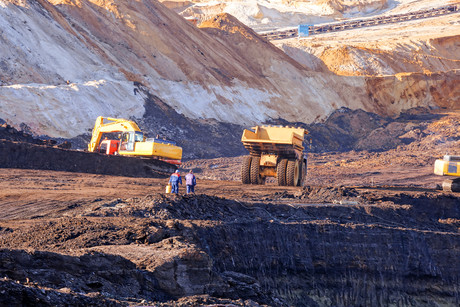Innovation in mining

The Australian mining industry is in a state of flux. Companies are faced with heightened pressure to reduce operating costs, maximise production and ensure uptime, while the need to remain compliant with environmental and safety regulations is ever present. Mining companies devote significant time and effort to addressing these challenges, yet many of the methods and practices applied are dated and inefficient. With recent advancements in technology, the adoption of digital innovation in the mining industry has the power to drive efficiency, lift productivity and, ultimately, increase profits.
The fundamental drivers of business have not changed: streamlined and optimised operations, asset performance, people productivity, and health and safety. What has changed, though, is the digital, technology and innovation landscape.
It is predicted that 50 billion devices will be connected to the internet by 2020. In this new, connected world, referred to as the Internet of Things (IoT), there is huge opportunity to realise the value of the data generated by these devices through the adoption of innovative, integrated digital solutions.
Some companies aren’t convinced by the role of digital innovation; while ‘experiment and fail fast’ is a common belief held by small start-ups, this approach can feel uncomfortable for larger businesses. However, it’s important to understand that innovation often means favourable incremental gains, rather than massive transformational change.
Through the adoption of new digital technologies, the mining industry is beginning to acknowledge and appreciate the impact of innovation on their resource base, supply chain and equipment assets.
There are plenty of examples of how innovative technologies are driving improvements in the industry. For one, pattern recognition and process modelling is increasingly being used with systems learning. Drawing on this technology, predictive analytics with unique, advanced predictive algorithms can identify subtle changes in equipment behaviour and raise early warning signs of equipment performance and health problems.
Mobile technology is increasingly being utilised for data collection, inspections, performance and health monitoring, from process to people, in the field or off-site. Adaptive real-time supply chains will drive extraction sequences with production linked to market demand, process changes and financial constraints.
Immersive virtual reality can offer a lifelike 3D environment for training, testing and process simulation. It enables training and simulation of plant safety procedures, even for remote or hard-to-access locations.
In the data storage and analysis space, cloud computing software-as-services technologies will allow mining companies to have access to applications and information with less IT infrastructure, licensing management and hardware. And with the emergence of edge computing, critical processing, collection, validation, information sharing and smart decision-making will be brought closer to the data source.
In the new world of digital mining, the adoption of the Industrial Internet of Things (IIoT) and digitisation is a growing business imperative. To make the most of this new world, mining organisations must overcome the mental barriers that prevent action. Adopting innovations in your business need not mean ‘all or nothing’; innovation can be just as transformative when it’s done incrementally.
Australia must rethink the foundations of industrial automation
In order to compete globally, we need a willingness to rethink the foundations and build...
IMARC 2025 turns up the innovation spotlight
IMARC 2025 will bring mine owners, operators and contractors together with a line-up of the...
Skills are more critical than ever in today’s AI world
Our increasing reliance on AI to offload cognitive tasks weakens our memorising systems and skills.











